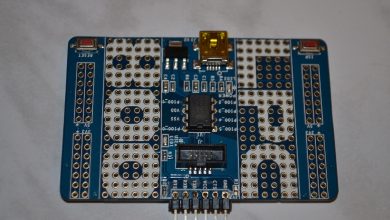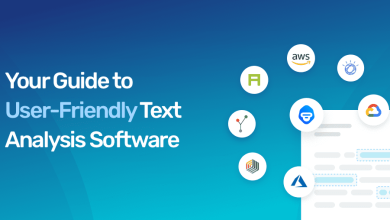What is the future of mobile app development? – Detailed Guide

As of 2021, there are over 7.1 billion app users globally. Every smartphone user has between 35 and 50 applications loaded on their devices. They remove some of them due to performance difficulties. Nothing, however, has slowed the industry’s rise. As a result of these statistics, an increasing number of startups and organizations are rising to build mobile application concepts for their businesses—additionally, this heightened rivalry in the mobile app development services.
Thus, designing a basic app with common functionality will not distinguish your app.
Below, we’ve discussed some upcoming trends to keep an eye on while designing an app:
1) Internet of Things and Cloud Integration
IoT and the cloud are both relatively new inventions.
In basic terms, cloud computing enables IoT by acting as a front-end.
The combination of IoT and cloud technologies enables new app and smart service scenarios, such as Database as a Service (DBaaS), Sensing as a Service (SaaS), and Video Surveillance as a Service (VSaaS).
Video surveillance, agriculture, smart cities, healthcare, smart metering, and smart homes are just a few of the real-world applications that make use of the Internet of Things and the cloud.
IoT and cloud integration simplifies data processing and storage, streamlines operations, increases collaboration and productivity, minimizes hosting costs, expedite installation and integration, and lowers the cost of data processing and its complicated performance.
2) Artificial Intelligence in Mobile Apps: The Future Is Bright
AI will continue to be a trend in app development in 2021 and beyond. It is critical to the mobile app development process since it enables more customized app experiences tailored to the customers’ demands. By 2023, the global AI software industry will generate revenue of $70.94 billion.
In a manner, developers may give a more customized experience and empower AI to take essential steps without human intervention by learning about users’ previous behaviors and use habits.
Face identification, voice recognition, picture recognition, text and image categorization, and predictive maintenance are some applications that may include AI capabilities.
3) Swift: The Language of the Future
Swift, Apple’s programming language, will play a significant part in future app development. That is why it is a well-known mobile trend that accelerates app development and lowers overall app development costs.
A variety of iOS application developers uses Swift. This language contains several useful features that other developers have overlooked while working with various local languages.
Swift’s Interactive Playgrounds feature enables developers to modify code without recompiling or resolving errors.
Swift’s primary features are inferred types & automatic memory management. Even so, one can communicate between Swift and Objective-C. The upshot is that iPad, & iPhone apps no longer need to be written in Objective-C.
4) The Future Mobile App Industry’s Role for Augmented and Virtual Reality
It’s predicted that by 2024, the augmented, virtual, and mixed reality business will be worth $30.7 billion.
By the end of 2026, with the advent of AR/VR, it is projected that the way mobile applications and games function will have changed. Additionally, people are switching from PCs to AR/VR, which demonstrates some advancements in ticket buying, trading, viewing, and mini-games, among other things.
A modified reality form of augmented reality was developed by superimposing computer-generated components over a real-world picture. AR applications do this via geolocation data, QR codes, or object recognition capability.
Additionally, virtual reality is a technology that requires a headset. And, it is completely immersed in computer-generated reality.
Incorporating augmented and virtual reality technologies into the design of apps across all business verticals enables developers to provide a more customized user experience.
AR/VR advancements include live concerts, virtual training simulations, learning methods, and location navigators.
AR/VR’s popularity rose due to its widespread use during pandemic days.
These technologies are continually improving the functionality and performance of mobile applications.
These technologies will enhance the creation of travel applications, gaming apps, and live-streaming apps in the future.
5) Future Apps Cross-Platform Development
The technology used in your app may vary depending on your company’s needs. If you want to produce market-ready software with various complicated features quickly, cross-platform app development is the way to go.
On the subject of cross-development, new trends in app development must emerge that declare that mobile applications may run on a variety of mobile operating systems (Windows, Android, iOS, etc.).
Cross-platform development technologies like NativeScript, React Native, and Xamarin is critical in the application development market. Additionally, they will contribute to cost savings and increased app development speed.
6) Fifth-Generation Technology
5G wireless technology is expected to alter the mobile app development services environment fundamentally. Due to 5G’s incredible speed holds the keys to a lavish existence in the future.
As well as revolutionizing AR/VR, 3D gaming, and data security, this strong technology will have a wide range of other uses.
This technology might benefit various sectors, from smart cities to supply chain management to augmented reality and virtual reality.
7) Blockchain technology
Initially, blockchain technology was renowned for its ability to ensure the stability of all cryptocurrencies. It is now employed as a database that can be used for practically any software, including banking, retail, and health.
It is a decentralized ledger that facilitates monitoring transactions between several parties and is accessible to all stakeholders. Contributes to system transparency and app security by preventing fraudulent transactions and prohibiting modifications to transactions when stakeholders are aware of them.
Additionally, this technique is optimal for peer-to-peer transactions. It enables it to remain consistent and dedicated records of transactions depending on the app’s requirements. Check out the best mobile app development services.
Blockchain integration solutions will seamlessly connect and exchange digital assets in the future.
8) Wearables
Global end-users would spend around $81.5 billion on wearable gadgets in 2021, increasing to approximately $90 billion by 2022.
Wearable technology integration is critical to our daily lives, from healthcare statistics to everyday psychological data.
Wearable gadgets enable more efficient everyday tasks.
When combined with several applications, this technology will provide various services in various fields, including healthcare apps, fitness apps, and more.
As a result, it is projected that wearable technology will have a significant influence on the next generation of application development methodologies.
Conclusion
We as mobile app Development Company assist businesses in defining the overall scope of a mobile application development project. From defining product objectives and business outcomes to prioritizing the right functionality that will have the greatest impact on users and developing a scalable product roadmap to support long-term growth, the deliverables from a Design Thinking workshop lay the groundwork for a future-proof mobile app product. Applying design thinking to your product strategy can ensure that it satisfies consumers’ demands in the most intuitive and frictionless manner possible.


